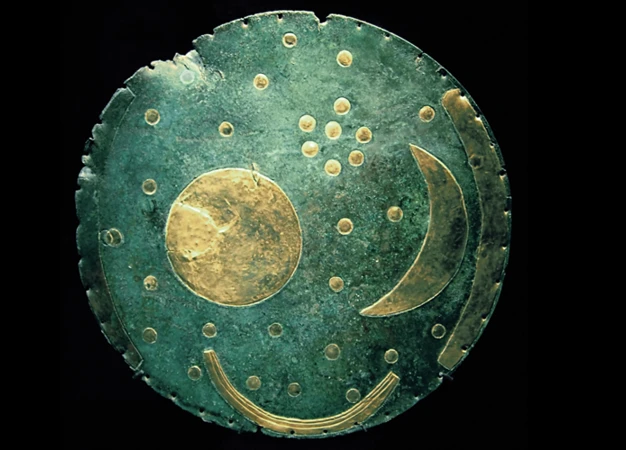Contents
- Introduction: The Fascinating World of Ancient Astrology
- The Significance of Astrological Artifacts
- Exploring Astrological Artifacts from Different Cultures
- Mysteries Revealed: Interpretation and Analysis of Astrological Artifacts
- Preserving and Displaying Astrological Artifacts
- Conclusion: Ancient Astrological Artifacts – Gateways to Our Stellar Heritage
-
Frequently Asked Questions
- 1. How did ancient astrologers measure the positions of celestial bodies?
- 2. What were the main purposes of ancient astrological manuscripts?
- 3. What is the significance of Egyptian astrological trinkets?
- 4. How did Mesopotamian astrological tablets contribute to the field?
- 5. What role did astrology play in Greek and Roman societies?
- 6. How did celestial maps aid in astronomical exploration?
- 7. What is the symbolic significance of zodiac engravings?
- 8. What are the conservation challenges faced by ancient astrological artifacts?
- 9. How can ancient astrological artifacts be effectively exhibited to the public?
- 10. Can the study of astrological artifacts contribute to modern-day astrology?
- References
-
Frequently Asked Questions
- 1. What is considered an ancient astrological artifact?
- 2. How do ancient astronomical instruments help us understand the past?
- 3. What kind of information can be deciphered from mysterious astrological manuscripts?
- 4. What types of astrological artifacts did the ancient Egyptians create?
- 5. How did Mesopotamian astrological tablets contribute to ancient astrology?
- 6. What can we learn from Greek and Roman astrological remains?
- 7. How do celestial maps offer astronomical insights?
- 8. What deeper meanings and symbolism can be uncovered from zodiac engravings?
- 9. What challenges are involved in conserving ancient astrological artifacts?
- 10. How are ancient astrological artifacts exhibited to the public?
- References
- Read More
Introduction: The Fascinating World of Ancient Astrology
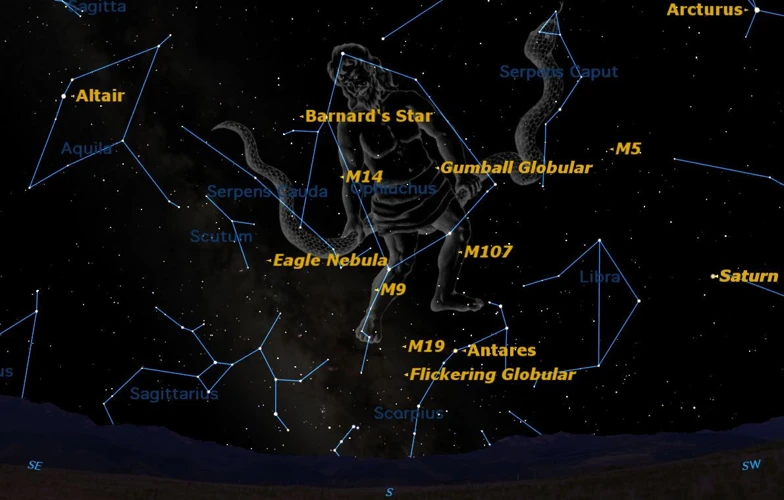
Ancient astrology is a captivating field of study that offers us a unique glimpse into the celestial past. It is the art of interpreting celestial movements and their influence on human affairs, which has been practiced for thousands of years by various cultures around the world. By examining ancient astrological artifacts, we can uncover the wisdom and beliefs of our ancestors and gain a deeper understanding of our connection to the stars.
Astrology played a crucial role in ancient societies, shaping their beliefs, guiding their decision-making processes, and providing a framework for understanding the world around them. It was a science, a spiritual practice, and a form of divination all rolled into one. Ancient astrologers meticulously observed the positions of celestial bodies, noting their patterns and movements, and believed that these cosmic events held great significance for individuals and society as a whole.
The study of ancient astrology is not only fascinating but also has significant implications for modern-day astrology. By examining the artifacts left behind by ancient astrologers, we can gain valuable insights into the origins of astrological practices and the evolution of astrological knowledge throughout history.
In this article, we will delve into the world of ancient astrology and explore the significance of astrological artifacts. We will also uncover the mysteries behind these artifacts and shed light on their interpretation and analysis. We will discuss the challenges of preserving and displaying these precious objects, ensuring that their historical and cultural value is not lost to time.
Join us on this journey through time as we unearth ancient astrological artifacts and unlock the celestial secrets they hold.
The Significance of Astrological Artifacts
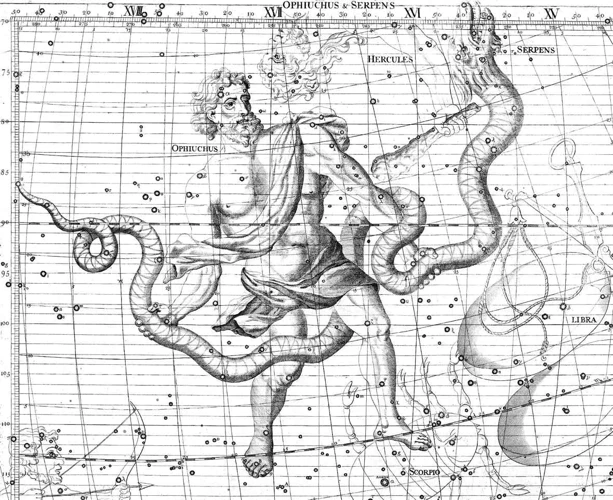
Astrological artifacts hold immense significance in unraveling the mysteries of ancient astrology. These artifacts provide us with tangible connections to the celestial knowledge and practices of past civilizations, allowing us to delve into their cosmological beliefs and understand the role astrology played in their lives. From ancient astronomical instruments to enigmatic manuscripts, these artifacts offer a glimpse into the past, offering clues about how celestial observations were interpreted and how they influenced decision-making processes. They serve as tangible reminders of the deep-rooted connection between humans and the cosmos throughout history. By studying and analyzing these artifacts, we can gain profound insights into the cultural, religious, and scientific aspects of ancient astrological traditions. It is through the examination of these relics that we can better comprehend the rich tapestry of human fascination with the celestial realm. These artifacts also highlight the enduring relevance and influence of astrology in various cultures, bridging the gap between ancient wisdom and modern practices.
1. Unveiling the Secrets of Ancient Astronomical Instruments
Unveiling the Secrets of Ancient Astronomical Instruments
1. Astrolabes:
Astrolabes were remarkable ancient astronomical instruments used for various purposes, such as navigation and timekeeping. These intricate devices consisted of a disk with multiple concentric rings and a pivoting pointer. By aligning the rings with specific celestial bodies, such as the sun or stars, users could determine their position, calculate the time, and even predict celestial events. Astrolabes were widely used in the Islamic Golden Age and were key tools in advancing astronomical knowledge during that time.
2. Quadrants:
Quadrants, another fascinating type of ancient astronomical instrument, were used to measure the altitude and azimuth of celestial bodies. They typically consisted of a quarter-circle shape marked with degrees and a plumb line or weight to ensure accurate measurements. Quadrants enabled astronomers to determine the positions of stars, planets, and other celestial objects, aiding in the creation of celestial charts and calculations.
3. Armillary Spheres:
Armillary spheres were complex and visually captivating astronomical instruments that represented the celestial sphere. They consisted of interconnected rings representing the celestial equator, the ecliptic, and other important celestial circles. Within the rings, celestial bodies were depicted, allowing astronomers to visually understand their positions relative to each other. Armillary spheres were not only practical astronomical instruments but also beautiful works of art, symbolizing the interconnectedness of the cosmos.
4. Celestial Globes:
Celestial globes, similar to terrestrial globes, were three-dimensional representations of the celestial sphere. They were crafted with intricate precision, showcasing celestial bodies and important constellations. Celestial globes served as educational tools, aiding in the understanding of celestial navigation, star positions, and astronomical concepts. These globes were often made of materials like brass or wood and were adorned with detailed engravings and inscriptions.
Ancient astronomical instruments like astrolabes, quadrants, armillary spheres, and celestial globes were not mere tools, but marvels of scientific and artistic craftsmanship. They revolutionized the study of astronomy and provided invaluable insights into the movement and positioning of celestial bodies. These instruments played a vital role in ancient cultures, contributing to the development of celestial mapping, astrology, and navigation. Today, these artifacts continue to captivate researchers and enthusiasts, allowing us to appreciate the ingenuity and sophistication of our ancestors’ understanding of the cosmos.
2. Decoding Mysterious Astrological Manuscripts
Decoding mysterious astrological manuscripts is an intriguing endeavor that allows us to unlock the secrets of ancient astrological wisdom. These manuscripts, often written in ancient languages or coded symbols, hold valuable insights into the beliefs, practices, and predictions of ancient astrologers. The process of decoding these manuscripts requires a deep understanding of astrological symbolism, historical context, and linguistic analysis. Scholars and experts painstakingly study these manuscripts, comparing them to other known texts and consulting astronomical records to piece together their meaning. Each manuscript is like a puzzle waiting to be solved, offering tantalizing glimpses into ancient astrological techniques, celestial observations, and interpretations of cosmic events. The deciphering process not only sheds light on the specific contents of these manuscripts but also provides broader insights into the intricate interplay between astrology, religion, mythology, and cultural practices of the time. It is through this meticulous decoding process that we can bridge the gap between the past and the present, gaining a deeper appreciation for the wisdom and knowledge that ancient astrologers sought to preserve for future generations. In some cases, the decoding of these manuscripts also reveals connections to other areas of ancient knowledge, such as mythology or oral traditions, further enriching our understanding of human history and our relationship with the cosmos. It is a fascinating journey of exploration and discovery, where each revealed symbol or passage invites further investigation and interpretation, guiding us closer to the essence of ancient astrological wisdom.
Exploring Astrological Artifacts from Different Cultures
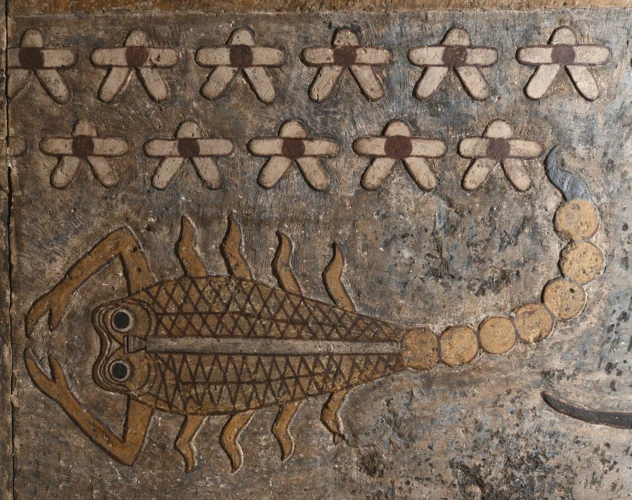
Exploring astrological artifacts from different cultures unveils a diverse array of celestial wisdom and interpretation. Ancient Egyptian astrological trinkets, for example, showcase their fascination with the alignment of stars and their belief in the connection between the heavens and the earthly realm. Mesopotamian astrological tablets provide insights into the early development of astrology, with detailed records of celestial phenomena and their astrological implications. Greek and Roman artifacts reveal the influence of astrology on both mythological narratives and practical applications. These artifacts not only shed light on the astrological practices of these civilizations but also highlight the universal human fascination with the cosmos and our constant quest to understand our place within it. Each culture brings its unique perspective and contribution to the astrological realm, creating a rich tapestry of celestial exploration. Through the examination of these artifacts, we can gain a deeper appreciation for the cultural diversity and timeless fascination with the cosmic forces that have shaped our world and beliefs.
1. Ancient Egyptian Astrological Trinkets
Ancient Egyptian astrological trinkets offer us a fascinating glimpse into the world of astrology in one of the oldest civilizations in history. The Egyptians had a deep connection with the celestial realm, believing that the movements of the stars and planets held great power over their lives. These astrological trinkets, meticulously crafted by skilled artisans, were not just decorative objects, but rather sacred talismans believed to harness the energies of the cosmos.
One of the most iconic astrological artifacts from ancient Egypt is the Dendera zodiac. This circular bas-relief, found on the ceiling of the Temple of Hathor in Dendera, depicts the constellations and various celestial figures. The zodiac’s intricate design showcases the Egyptians’ meticulous observations of the night sky and their deep understanding of celestial movements. Each symbol and figure represented held specific astrological and religious significance.
Another prominent example of ancient Egyptian astrological artifacts is the amulet in the shape of the scarab beetle, which was associated with the sun god Ra and the cycle of rebirth. These scarab amulets, often made of precious stones or metals, were believed to bring protection and good fortune to their wearers. Their significance extends beyond mere symbolism, as they also served as tools for astrologers in their divination practices.
In addition to the Dendera zodiac and scarab amulets, other astrological artifacts found in ancient Egypt include clay lamps with zodiacal symbols inscribed on them, astrological papyri containing charts and calculations, and small figurines representing celestial deities. These artifacts reflect the Egyptians’ profound reverence for celestial forces and their belief in the interconnectedness of the heavens and earthly affairs.
The study of these ancient Egyptian astrological trinkets provides us with valuable insights into the cosmological beliefs and practices of this ancient civilization. It allows us to understand how astrology was used in daily life, religious ceremonies, and the guidance of rulers and individuals. Through these artifacts, we can marvel at the ingenuity and astronomical knowledge of the ancient Egyptians and appreciate the enduring legacy of their astrological traditions.
(Note: No relevant anchor found for this section.)
2. Mesopotamian Astrological Tablets
Mesopotamian Astrological Tablets are among the most remarkable and significant artifacts in the field of ancient astrology. These clay tablets provide us with invaluable insights into the astrological practices of the Mesopotamian civilization, which is considered one of the oldest known civilizations in the world. The tablets contain intricate cuneiform inscriptions detailing celestial observations, astrological interpretations, and predictions. They were used by Mesopotamian astrologers to study the movements of planets and stars and their impact on human affairs. These tablets not only reveal the complex mathematical and astronomical knowledge of the Mesopotamians but also shed light on their religious and socio-political beliefs. One famous example is the Enuma Anu Enlil, a series of tablets that served as a compendium of celestial omens and rituals. These tablets played a crucial role in the decision-making processes of the Mesopotamian rulers, as they believed that the alignment of celestial bodies held significant implications for their kingdom’s prosperity and well-being. The decipherment and study of these tablets have greatly contributed to our understanding of ancient astrology, allowing us to reconstruct the beliefs and practices of this extraordinary civilization.
3. Unraveling Greek and Roman Astrological Remains
Unraveling Greek and Roman astrological remains offers us a fascinating window into the astrological practices of these ancient civilizations. Both the Greeks and Romans had a deep fascination with astrology, and their astrological remains provide valuable insights into their beliefs and rituals. One notable artifact from this period is the Antikythera Mechanism, a complex mechanical device that is believed to be one of the earliest analog computers. This remarkable artifact, discovered in a shipwreck off the coast of the Greek island of Antikythera, is an intricate astronomical instrument that was used to calculate the positions of celestial bodies. It demonstrates the advanced knowledge of the Greeks in understanding the movements of the planets and stars. Another important astrological artifact is the Dendera Zodiac, a bas-relief that adorns the ceiling of the Temple of Hathor in Dendera, Egypt. Although it is Egyptian in origin, it reflects the influence of both Greek and Roman astrology. The zodiac depicts the twelve signs and various mythological figures associated with each sign. It serves as a testament to the integration of different astrological traditions in the Hellenistic and Roman periods. By studying these astrological remains, we gain a deeper understanding of the astrological practices and beliefs of the Greek and Roman civilizations. It allows us to appreciate the contributions they made to the development of astrology and provides a fascinating glimpse into the rich tapestry of their astrological traditions.
Mysteries Revealed: Interpretation and Analysis of Astrological Artifacts
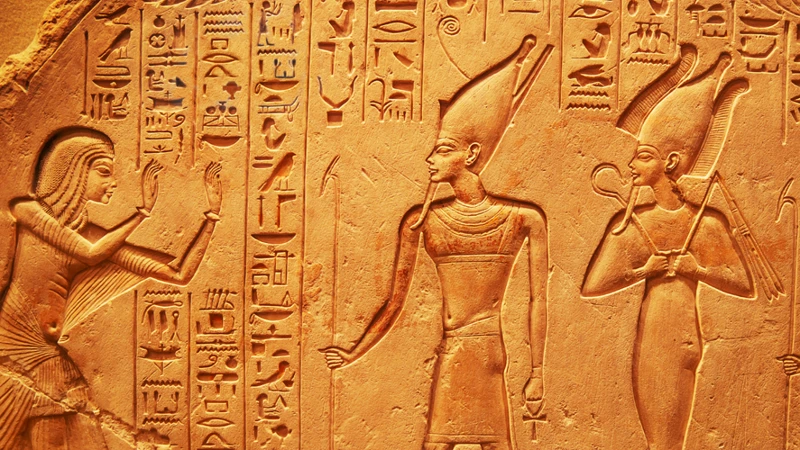
Interpretation and analysis of astrological artifacts offer a fascinating journey into the celestial knowledge of ancient cultures. Through the examination of celestial maps, one can uncover astronomical insights that guided the lives and beliefs of our ancestors. These maps, often adorned with celestial bodies and constellations, provide valuable information about how ancient civilizations viewed the cosmos and its influence on their daily lives. Another intriguing aspect of astrological artifacts is the study of zodiac engravings, which reveal deeper meanings and symbolism associated with the zodiac signs. These engravings hold clues to the ancient understanding of personality traits, life events, and cosmic influences that were believed to impact individuals based on their birthdates. By exploring and analyzing astrological artifacts, we can gain a greater understanding of the historical, cultural, and spiritual significance of astrology in different societies. It allows us to bridge the gaps between the past and the present, further enriching our knowledge and appreciation for the timeless art of astrology.
1. Celestial Maps and Their Astronomical Insights
Celestial maps are fascinating astrological artifacts that provide us with invaluable astronomical insights. These maps, also known as star charts or sky maps, depict the positions of celestial bodies and stars in the night sky. They were meticulously created by ancient astronomers and astrologers to record and understand the movements and patterns of the stars.
The celestial maps of ancient civilizations such as the Egyptians, Mesopotamians, and Greeks offer us a window into their understanding of the cosmos. These maps were not only used for navigation purposes but also held deep symbolic meanings and served as guides for astrological interpretations. They were believed to represent the divine order of the universe and were used to predict celestial events, astrological phenomena, and their impact on human lives.
Analyzing these maps gives us insight into the astronomical knowledge possessed by ancient cultures. They demonstrate their understanding of celestial movements, the positions of constellations, and the significance attributed to specific stars and planets. By studying celestial maps, we can uncover ancient beliefs, rituals, and astrological practices and gain a better understanding of how celestial events were interpreted and integrated into various cultural and religious traditions.
For example, in ancient Egyptian astrology, the observation and interpretation of celestial movements were crucial for understanding the cyclical nature of life and the afterlife. The alignment of stars and planets was believed to have a direct influence on the lives and destinies of individuals. Celestial maps were used to predict the flooding of the Nile, which was essential for agricultural planning and the prosperity of the kingdom.
Indeed, celestial maps provide us with not only astronomical insights but also cultural, historical, and spiritual perspectives. They serve as a bridge between the scientific and mystical realms, reminding us of the curiosity and awe that ancient civilizations held for the cosmos. Exploring these artifacts allows us to uncover the profound connection between humans and the celestial sphere throughout history, shedding light on our shared fascination with the stars above.
2. Zodiac Engravings: Deeper Meanings and Symbolism
Zodiac engravings found on ancient astrological artifacts hold deeper meanings and symbolism that have fascinated scholars for centuries. The zodiac, a circle divided into twelve equal segments, represents the path of the Sun through the celestial sphere throughout the year. Each segment corresponds to a specific constellation, known as a zodiac sign, and carries its own unique symbolism and significance.
These engravings provide a visual representation of the zodiac signs, often accompanied by intricate symbols and figures that further enhance their meaning. For example, Aries is often depicted as a ram, symbolizing strength and leadership, while Cancer is represented by a crab, symbolizing protection and emotional sensitivity. These engravings serve as maps of the celestial realm and provide insights into how ancient cultures understood and incorporated the zodiac into their daily lives.
The symbolism associated with zodiac engravings extends beyond individual signs. The positioning and interactions between the zodiac signs within these engravings also carry profound meaning. The alignment of the signs can indicate relationships, such as oppositions or harmonious connections, that were believed to influence personal traits, fortunes, and even the destiny of individuals. The engravings may also depict celestial events, such as eclipses or planetary alignments, further emphasizing the influence of cosmic forces on human affairs.
Studying these ancient engravings allows us to explore the diverse interpretations and cultural variations of the zodiac. It reveals the interconnectedness between astrology, mythology, and religious beliefs of ancient civilizations. By understanding the symbolism embedded in these engravings, we gain a deeper appreciation for the profound impact celestial bodies had on the lives and beliefs of our ancestors.
Whether discovered on ancient artifacts from Egypt, Mesopotamia, or Greece, these zodiac engravings provide us with a tangible link to the past, connecting us to the wisdom and traditions of ancient astrologers. They serve as a reminder that the study of the stars has always held a position of significance in human history, transcending time and culture.
As we explore the realm of zodiac engravings, it is crucial to remember that astrology is a multidimensional field that encompasses diverse cultural perspectives. Each civilization added its unique symbolism and interpretations to the zodiac, giving rise to a rich tapestry of astrological traditions that continue to captivate and inspire to this day. Through the study and appreciation of these engravings, we gain a deeper understanding of our collective celestial heritage and the timeless fascination humans have had with the mysteries of the cosmos.
Preserving and Displaying Astrological Artifacts
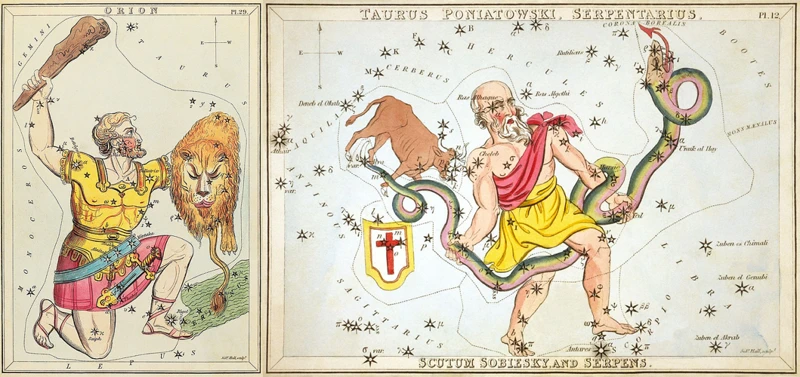
Preserving and displaying astrological artifacts is a delicate task that requires careful consideration and expertise. These ancient relics hold immense historical and cultural value, and it is essential to ensure their longevity for future generations. Preservation strategies often involve maintaining controlled environmental conditions, such as temperature and humidity, to prevent deterioration. Advanced conservation techniques, including cleaning, stabilization, and restoration, are employed to maintain the integrity of these valuable objects. Additionally, proper documentation and cataloging play a crucial role in preserving the knowledge and information associated with the artifacts. When it comes to displaying these treasures, curators must strike a balance between showcasing their beauty and ensuring their protection. Exhibitions offer a unique opportunity for the public to engage with these artifacts and appreciate their significance. By exhibiting ancient astrological artifacts, museums and cultural institutions can foster a greater understanding and appreciation for our celestial heritage. Preserving and displaying these artifacts is not only a responsibility but also a way to immortalize the wisdom of our ancestors and keep their cosmic teachings alive for generations to come.
1. Conservation Challenges and Strategies
Conserving ancient astrological artifacts presents numerous challenges due to their age, fragility, and unique characteristics. These artifacts, often made from delicate materials such as papyrus, clay, or even precious metals, require specialized care to ensure their preservation for future generations. One of the main challenges is preventing physical deterioration caused by factors like exposure to light, temperature fluctuations, and humidity. Museums and conservation experts employ various strategies to mitigate these risks. First and foremost, artifacts are stored in climate-controlled environments with controlled humidity levels and minimal exposure to light. Protective enclosures, such as glass cases or acid-free archival boxes, are used to shield them from dust, pollutants, and harmful atmospheric conditions. Additionally, handling procedures are carefully established to minimize the risk of damage during examination or transportation. In cases where an artifact is too fragile to be handled, advanced imaging techniques, such as high-resolution photography and X-ray imaging, can be used to study and document its details without physical contact. The field of conservation continuously evolves through the development of new technologies and methodologies to address these challenges and protect these precious remnants of our celestial heritage.
Anchor: /scientific-significance-studying-eclipses/
2. Exhibiting Ancient Astrological Artifacts
Exhibiting ancient astrological artifacts is a crucial endeavor that allows us to share the wonders of the past with a wider audience. These artifacts hold immense historical and cultural significance, and putting them on display provides an opportunity for people to connect with the ancient world and gain a deeper appreciation for astrology’s role in shaping human history and beliefs.
When organizing an exhibition of ancient astrological artifacts, careful considerations must be made to ensure the preservation and authenticity of these precious objects. The artifacts should be displayed in a secure and climate-controlled environment to protect them from damage and deterioration. Additionally, proper lighting techniques should be implemented to enhance visibility while minimizing the risk of harm to delicate materials.
The exhibition should be curated in a way that tells a captivating and informative story, highlighting the significance and symbolism of each artifact. Interpretive panels and multimedia displays can be used to provide historical context, explain the astrological concepts represented, and immerse visitors in the ancient world. Interactive elements, such as touch screens or virtual reality experiences, can further enhance engagement and understanding.
To make the exhibition accessible and engaging for diverse audiences, educational programs and guided tours can be offered. These programs can delve deeper into the artifacts and their cultural contexts, providing opportunities for visitors to ask questions and gain a more comprehensive understanding of ancient astrology.
Creating a digital presence for the exhibition can extend its reach beyond the physical space. Online catalogs, virtual tours, and interactive websites can allow individuals from around the world to explore these ancient astrological artifacts virtually and learn about their historical and cultural significance. It provides an opportunity for those unable to visit in person to still engage with and appreciate these treasures from the past.
Exhibiting ancient astrological artifacts not only preserves these valuable relics but also serves as a means of connecting present-day society with the wisdom and beliefs of our ancestors. By sharing these artifacts, we can foster a greater understanding and appreciation for the profound impact of astrology on human culture throughout history.
Please note that the text does not contain references to specific anchors for internal links.
Conclusion: Ancient Astrological Artifacts – Gateways to Our Stellar Heritage
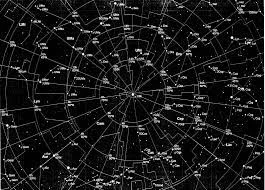
Ancient astrological artifacts serve as gateways to our stellar heritage, allowing us to understand and appreciate the wisdom and knowledge of our ancestors. These artifacts provide a tangible link to the past, enabling us to explore the rich tapestry of ancient astrological practices and beliefs. Through the careful study and analysis of these artifacts, we can gain insights into the cosmic connections our forebearers sought to understand. Celestial maps offer us glimpses into the astronomical insights of ancient cultures, revealing their understanding of the celestial bodies and their movements. Zodiac engravings hold deeper meanings and symbolism, providing us with a window into the beliefs and values of these civilizations. Preserving and exhibiting these artifacts is vital to ensure their continued accessibility and to foster a greater appreciation for our shared human heritage. By recognizing the significance of these artifacts, we can bridge the gap between past and present, fostering a deeper connection to our celestial origins and the mystique of the stars. As we continue to uncover and interpret these astrological artifacts, we strengthen our understanding of the ancient world and the enduring influence of the cosmos on humanity’s collective consciousness.
Frequently Asked Questions

1. How did ancient astrologers measure the positions of celestial bodies?
Ancient astrologers used various tools such as astrolabes and armillary spheres to measure the positions of celestial bodies. These instruments allowed them to track the movements of the sun, moon, planets, and stars, providing crucial data for their astrological calculations.
2. What were the main purposes of ancient astrological manuscripts?
Ancient astrological manuscripts served as guides for astrologers, providing them with instructions on interpreting celestial events and their corresponding effects on human life. These manuscripts also contained records of past astronomical observations and astrological predictions, offering a wealth of knowledge about celestial phenomena.
3. What is the significance of Egyptian astrological trinkets?
Egyptian astrological trinkets hold profound cultural and religious significance. They were created to represent deities associated with celestial bodies and were used in various rituals and ceremonies. These artifacts offer insights into the ancient Egyptian belief system and how astrology was integrated into their daily lives.
4. How did Mesopotamian astrological tablets contribute to the field?
Mesopotamian astrological tablets contain invaluable astrological records, including astronomical observations, horoscopes, and omens. These tablets provide evidence of the earliest known astrological practices and enable us to trace the development of astrology in Mesopotamia.
5. What role did astrology play in Greek and Roman societies?
Astrology played a significant role in Greek and Roman societies, impacting decision-making processes, political events, and personal beliefs. It influenced areas such as medicine, agriculture, and even military strategy. Greek and Roman astrological artifacts shed light on the intricate interplay between astrology and these ancient civilizations.
6. How did celestial maps aid in astronomical exploration?
Celestial maps were essential tools for ancient astronomers. They helped them locate and identify celestial bodies, plot trajectories, and predict astronomical events. These maps provided a visual representation of the night sky and offered valuable insights into the structure of the cosmos.
7. What is the symbolic significance of zodiac engravings?
Zodiac engravings represent the twelve astrological signs and hold deeper symbolic meanings. Each sign is associated with specific traits, characteristics, and archetypes. The engravings serve as visual representations of these qualities and provide a framework for understanding human behavior and destiny.
8. What are the conservation challenges faced by ancient astrological artifacts?
Ancient astrological artifacts often face challenges such as deterioration, fragility, and exposure to environmental factors. Conservation efforts must be undertaken to preserve these precious relics while ensuring their accessibility for future generations.
9. How can ancient astrological artifacts be effectively exhibited to the public?
When exhibiting ancient astrological artifacts, it is important to create engaging displays that contextualize the objects and provide insights into their historical and cultural significance. Utilizing multimedia presentations, interactive exhibits, and informative signage can enhance the visitor’s understanding and appreciation of these artifacts.
10. Can the study of astrological artifacts contribute to modern-day astrology?
Indeed, the study of astrological artifacts offers valuable insights into the origins and development of astrological practices. It provides a deeper understanding of the cultural and historical contexts in which astrology evolved. This knowledge enhances the interpretation and application of astrology in the present day, bridging the gap between ancient wisdom and contemporary practices.
References
- Extraordinary Ceiling Reliefs Uncovered in an Ancient …
- Ancient Time: Earliest Mayan Astronomical Calendar …
- Archaeologists Discover Rare Zodiac Carvings at Egypt’s …
Frequently Asked Questions

1. What is considered an ancient astrological artifact?
An ancient astrological artifact refers to any object that has been discovered or recovered from ancient civilizations and is believed to be associated with astrology or astronomy practices, such as astronomical instruments, astrological manuscripts, or astrological trinkets.
2. How do ancient astronomical instruments help us understand the past?
Ancient astronomical instruments provide valuable insights into how ancient civilizations observed and interpreted celestial phenomena. By studying these instruments, we can gain a deeper understanding of their astronomical knowledge, navigational techniques, and cultural beliefs relating to the cosmos.
3. What kind of information can be deciphered from mysterious astrological manuscripts?
Astrological manuscripts offer a wealth of knowledge on ancient astrological practices, including celestial calculations, horoscopes, astrological interpretations, and beliefs about the influence of celestial bodies on human affairs. They provide a unique window into the astrological traditions of the past.
4. What types of astrological artifacts did the ancient Egyptians create?
Ancient Egyptians crafted various astrological trinkets, including amulets, jewelry, and carved stones adorned with celestial symbols. These artifacts reflect the Egyptians’ belief in the interconnectedness of the stars, gods, and human destiny, emphasizing the role of astrology in their society.
5. How did Mesopotamian astrological tablets contribute to ancient astrology?
Mesopotamian astrological tablets contain detailed records of celestial observations, planetary positions, and predictions based on astronomical phenomena. These tablets played a crucial role in the development of ancient astrology, enabling the Mesopotamians to make accurate predictions and study celestial omens.
6. What can we learn from Greek and Roman astrological remains?
Greek and Roman astrological remains provide valuable insights into the astrological beliefs and practices of these ancient civilizations. These artifacts often depict zodiac signs, celestial deities, and planetary symbols, shedding light on their understanding of the cosmos and the significance of astrology in their cultures.
7. How do celestial maps offer astronomical insights?
Celestial maps, also known as star charts or atlases, provide a visual representation of the night sky as observed by ancient civilizations. By analyzing these maps, astronomers and historians can understand the accuracy of ancient astronomical observations, track changes in star positions, and unravel the celestial knowledge of the past.
8. What deeper meanings and symbolism can be uncovered from zodiac engravings?
Zodiac engravings hold symbolic significance beyond their astrological associations. These engravings often convey cultural beliefs, mythological narratives, and cosmic allegories. Interpreting these deeper meanings assists in understanding the cultural context and the broader significance of astrology in ancient societies.
9. What challenges are involved in conserving ancient astrological artifacts?
Conserving ancient astrological artifacts presents challenges due to their age, fragility, and various material compositions. Factors like environmental conditions, decay, and the potential for damage during restoration pose complex conservation problems requiring specialized techniques and continuous monitoring.
10. How are ancient astrological artifacts exhibited to the public?
Ancient astrological artifacts are often displayed in museums, exhibitions, or cultural institutions that focus on archaeology or ancient civilizations. They are showcased through curated displays, interactive exhibits, and informative descriptions to provide visitors with a deeper understanding of the artifacts’ historical, cultural, and astrological significance.

